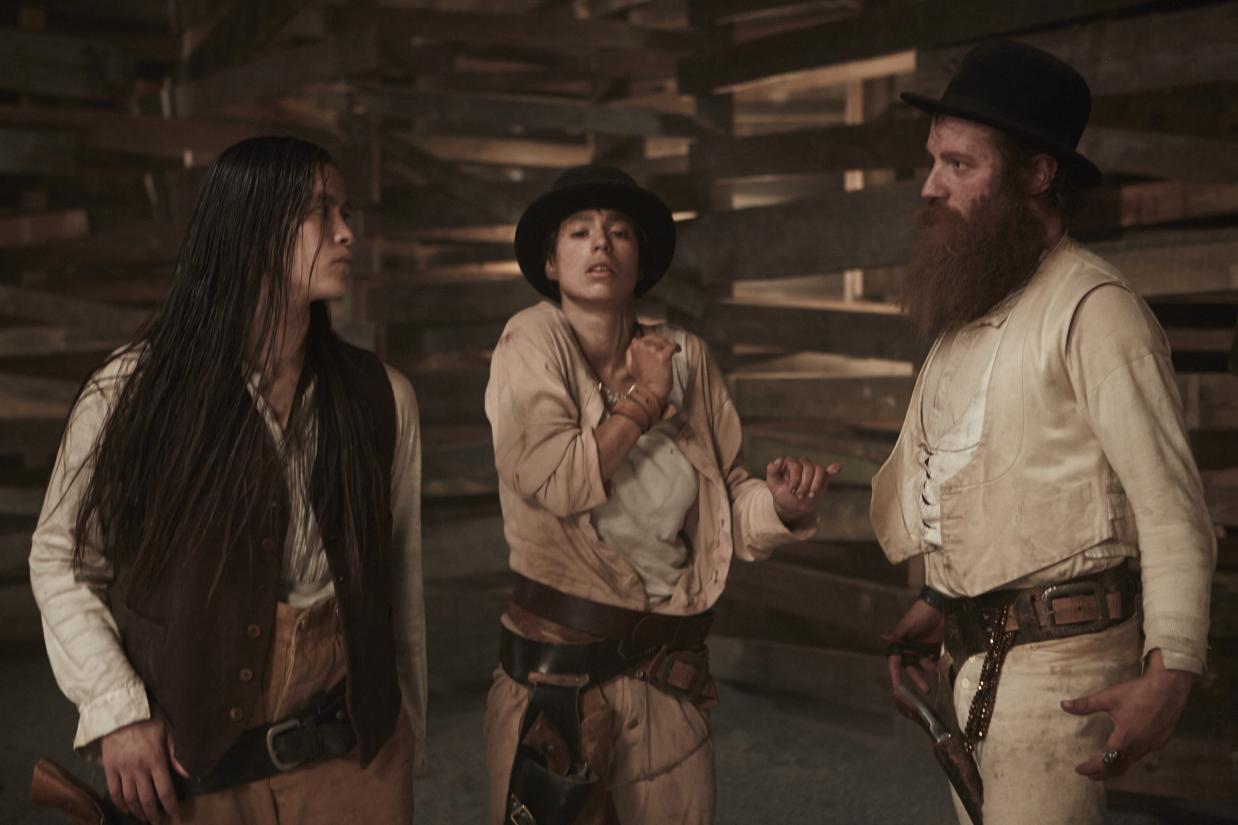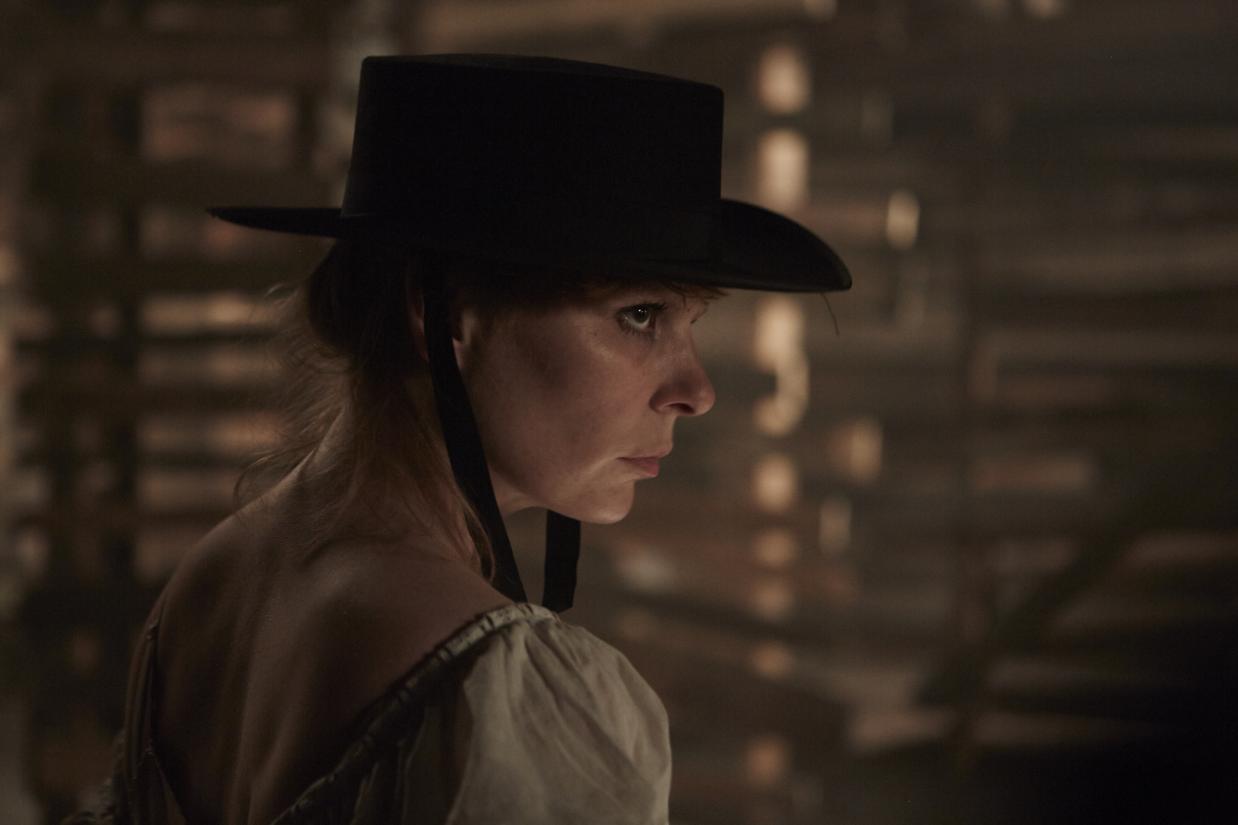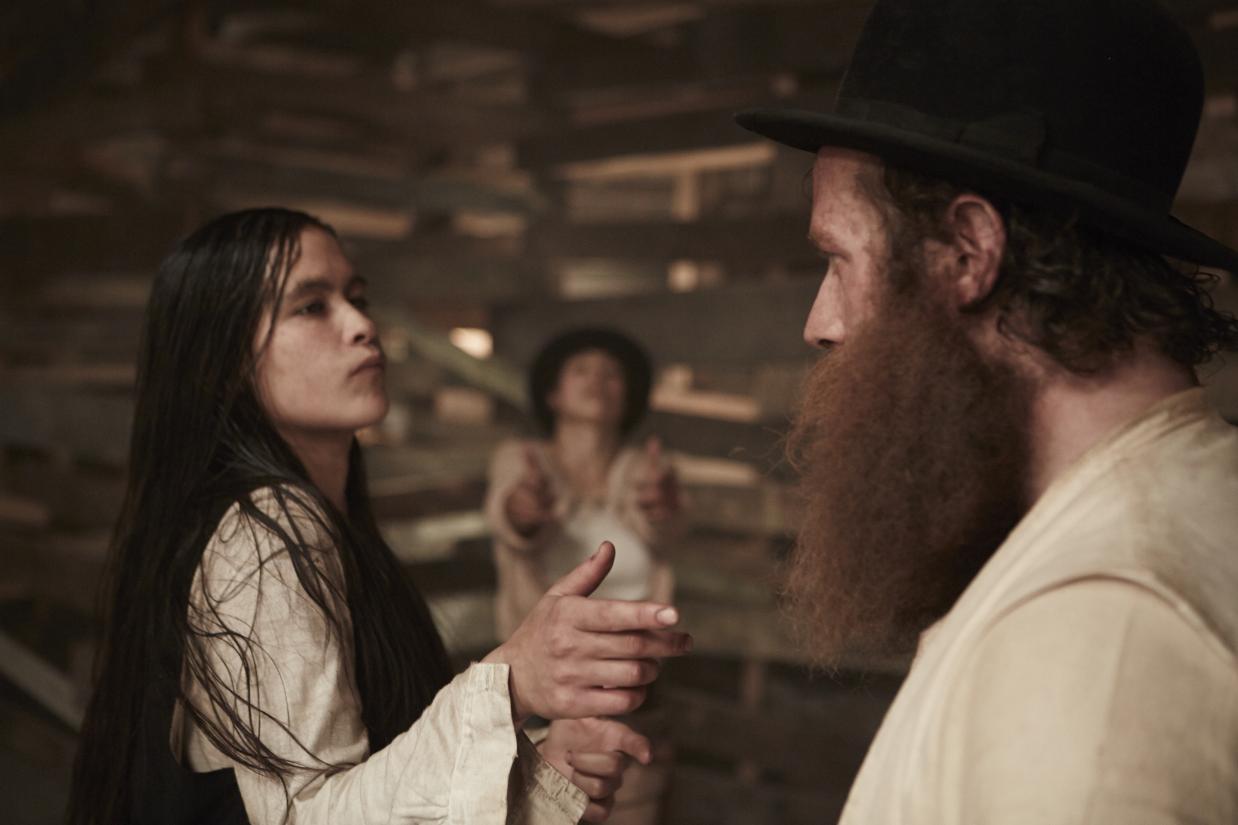The film features four cowboys – or cowgirls – with a more or less androgynous look. The scene is set in a sort of dead end, a dusty room with walls made of old timber. Despite their cowboy outfits, their behaviour is not what one would expect from typica cowboys. Their performance resembles a sort of duel or high-intensity dance with pulsating moves, nervous tics and cramps, body spasms and exchanges of paranoid gazes, the pace fluctuating between slow and rapid.
The body’s trauma centre
Koester is interested in the Austrian psychoanalyst Wilhelm Reich’s notion that lived episodes and traumas from our life over time become embedded in our nervous and muscular systems. The experiences we have throughout life store themselves in the body’s nervous system and speak their own language through our movements and facial expressions. In the film, Koester directs our attention to the forgotten memories that manifest themselves in the body and, in this case, suddenly surface as fragments of a cowboy’s life. The performers’ movements are slow and sneaky, as if they are wary of potential threats, even though no enemies are visible in the film. The next moment they draw their pistols, throw their lassos, pivot and duck, as if they were in the middle of a gunfight. They vary between attack and self-defence, as if they are permanently stuck in a paranoid, trance-like state. As if they are controlled by an underlying force affecting them from within.
Challenging heteronormativity
Koester also drew inspiration from William S. Burroughs’s 1983 western novel with the same name as the installation. The book deals with a homosexual cowboy with a passion for guns. With his film, Koester challenges the stereotypical heteronormative cowboy identity that tends to dominate Hollywood westerns. The installation addresses the topics of body and mind in a field of tension in between reality and fiction. The Place of Dead Roads will be part of the permanent collection presentation ‘Far From Home’ when ARoS reopens.
About Joachim Koester
Joachim Koester (b. 1962) graduated from the Royal Danish Academy of Fine Arts in 1993. Since his breakthrough in the 1990s, he has established a successful career both in Denmark and abroad. His early works revolved around the public space and its cultural construction. They often contained parallels to the performance genre and relational aesthetics. His most recent works have focused more on the relationship between body and spirit, fiction and reality. He often draws on utopian or forgotten stories and myths in his work. Among other accolades, Koester has won Kunstkritikerprisen (the Art Critics’ Award, 2013) from AICA Denmark, the Danish Section of the International Association of Art Critics. That year he was also awarded the Danish Arts Foundation’s honorary life-time grant.






